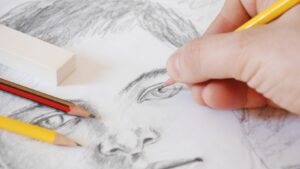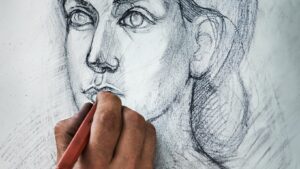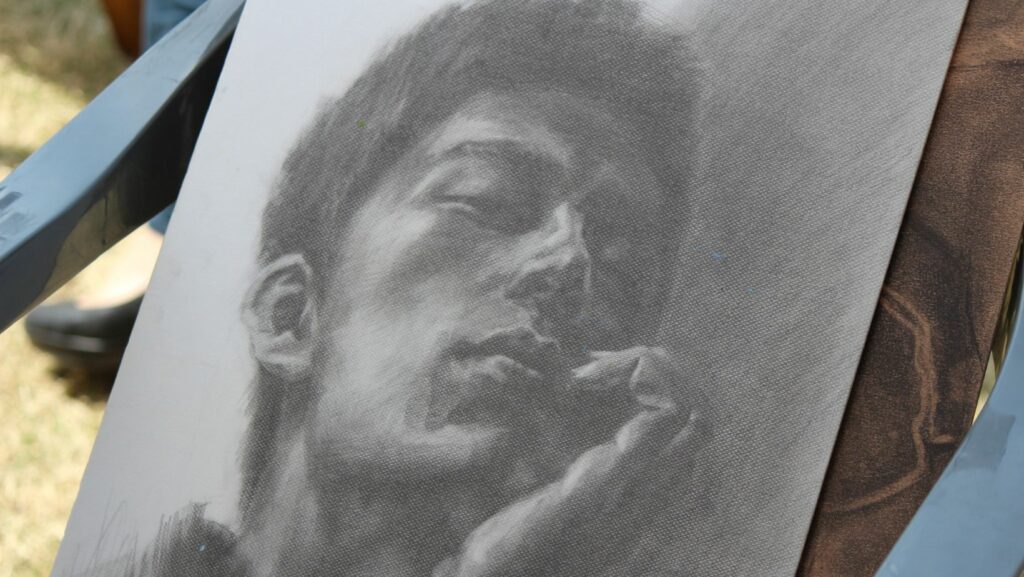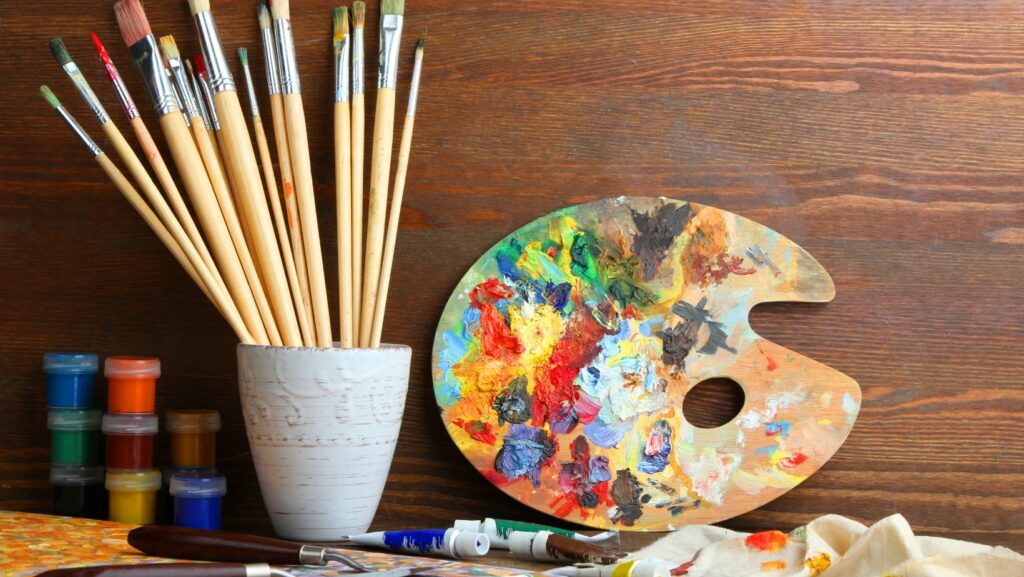Person Art
- Definition and Scope: Person art focuses on individual identity and connection, utilizing various mediums like painting, sculpture, and photography to highlight unique characteristics and stories.
- Historical Evolution: This art form has evolved from ancient civilizations to modern times, with significant influences from the Renaissance and 20th-century movements that challenged traditional portrayals.
- Techniques Employed: Techniques in person art range from traditional methods like oil painting and sculpture to contemporary approaches incorporating mixed media and digital tools, reflecting the diversity of human expression.

- Cultural and Emotional Impact: Person art serves as a cultural mirror, reflecting societal values and fostering emotional connection. It addresses themes like race, gender, and identity, promoting inclusivity and empathy.
- Notable Artists: Artists like Frida Kahlo, Kehinde Wiley, and Yayoi Kusama play pivotal roles in person art, each contributing distinctive perspectives that challenge audiences to reconsider identity and representation.
- Audience Engagement: The immersive nature of contemporary approaches invites viewers to interact with art, deepening emotional experiences and enhancing personal connections to the narratives portrayed.
In a world filled with diverse forms of expression, person art stands out as a captivating way to explore identity and human connection. This unique art form transcends traditional boundaries, allowing artists to capture the essence of individuals through various mediums. From painting to sculpture, person art invites viewers to engage with the intricate stories behind each piece.
As society evolves, so does the portrayal of people in art. Artists are increasingly using their work to challenge perceptions, celebrate diversity, and provoke thought. By delving into the realm of person art, one uncovers not just the beauty of the human form, but also the deeper narratives that shape our experiences. This article will explore the significance of person art and its impact on both artists and audiences alike.
Understanding Person Art
Person art represents a distinct approach to capturing the human experience. This art form emphasizes identity and connection, employing various techniques to reflect the essence of individuals.
Definition of Person Art
Person art encompasses artistic expressions focused on individuals, highlighting their unique characteristics and stories. This category includes various mediums, such as painting, sculpture, photography, and mixed media, that prioritize the human figure and its complexities. It serves as a platform for artists to explore themes like identity, emotion, and social commentary.
Historical Background
Historical developments in person art trace back to ancient civilizations. The depiction of human forms in cave paintings and Egyptian hieroglyphics establishes early connections to identity and societal roles. The Renaissance further expanded person art’s scope, emphasizing realism and individualism through works by artists like Leonardo da Vinci and Michelangelo.
In the 20th century, movements such as Expressionism and Surrealism challenged conventional portrayals, inviting personal interpretation and emotional depth. Contemporary artists now continue this evolution, using innovative techniques to explore concepts of race, gender, and culture within their work.
Techniques in Person Art
Person art employs various techniques that evolve from traditional methods to contemporary approaches, reflecting the dynamic nature of identity and human expression.
Traditional Methods
Traditional methods in person art often utilize techniques like oil painting, charcoal drawing, and sculpture. Artists favor oil painting for its depth and richness, enabling detailed skin tones and textures. Charcoal offers a powerful tool for capturing emotion and mood through expressive strokes. Sculpture, using materials such as clay, wood, or bronze, provides a three-dimensional representation of human figures, emphasizing form and movement. Techniques such as glazing and underpainting enhance depth in paintings, while methods like modeling and carving refine sculptural details. Historical influences, including Greek and Roman artistry, significantly shape these traditional practices, focusing on idealized human forms and proportions.
Contemporary Approaches
Contemporary approaches in person art incorporate mixed media, digital art, and installation techniques. Artists often blend painting and photography to create striking visual narratives that explore personal and societal themes. Digital tools, such as graphic design software, provide new possibilities for creativity, enabling manipulation of images and forms that challenge viewers’ perceptions. Installation art transforms entire spaces, engaging audiences by inviting them to interact with the artwork. Techniques like collage, using various materials and textures, further enhance storytelling within person art. These contemporary practices reflect ongoing dialogues about identity, encouraging diverse interpretations and embracing the complexity of human experiences.
The Impact of Person Art
Person art profoundly influences culture and emotional perspectives, shaping how individuals and societies view identity and connection. It resonates through various mediums, fostering communication and understanding.
Cultural Significance
Person art serves as a mirror reflecting societal values and norms. Diverse cultures use this art form to document histories, preserve traditions, and express collective identities. For example, Indigenous art often incorporates spiritual beliefs and ancestral stories, highlighting connections to land and heritage. In contemporary settings, artists like Kehinde Wiley challenge racial stereotypes through striking portrayals of people in historical contexts. Person art also promotes inclusivity, giving voice to underrepresented communities and celebrating diversity. This cultural dialogue encourages audiences to reassess their perspectives and recognize the rich tapestry of human experiences.
Emotional Expression
 Person art evokes strong emotions, connecting deeply with viewers. Artists capture human experiences, illustrating vulnerability, joy, and sorrow in their work. The rawness of emotions in pieces by Frida Kahlo, for instance, resonates with many, portraying personal struggles and triumphs. This art form invites reflection on the viewer’s experiences, facilitating empathy and understanding. Contemporary artists utilize multimedia approaches—like video installations and interactive exhibits—further engaging audiences and deepening emotional impact. Person art transcends mere representation, transforming into a powerful medium for emotional exploration and personal connection.
Person art evokes strong emotions, connecting deeply with viewers. Artists capture human experiences, illustrating vulnerability, joy, and sorrow in their work. The rawness of emotions in pieces by Frida Kahlo, for instance, resonates with many, portraying personal struggles and triumphs. This art form invites reflection on the viewer’s experiences, facilitating empathy and understanding. Contemporary artists utilize multimedia approaches—like video installations and interactive exhibits—further engaging audiences and deepening emotional impact. Person art transcends mere representation, transforming into a powerful medium for emotional exploration and personal connection.
Notable Artists in Person Art
Person art features a wide range of artists, each contributing uniquely to this expressive medium. Both established and emerging figures play significant roles in shaping its landscape.
Famous Figures
- Frida Kahlo
Frida Kahlo is renowned for her introspective self-portraits that explore personal and cultural identity. Her work often incorporates vibrant colors and symbolic imagery to convey her experiences and emotions.
- Pablo Picasso
Pablo Picasso’s influence on person art is profound. His ability to deconstruct traditional forms allowed new interpretations of identity, paving the way for modern portraiture that challenges conventional aesthetics.
- Andy Warhol
Andy Warhol’s pop art techniques revolutionized the portrayal of individuals in the contemporary art scene. His works often reflect themes of celebrity culture, identity, and mass production through vibrant depictions of famous figures.
- Kehinde Wiley
Kehinde Wiley is celebrated for his large-scale portraits that challenge racial stereotypes. He combines classical portrait techniques with modern themes, presenting subjects from underrepresented communities in powerful, dignified contexts.
- Yayoi Kusama
Yayoi Kusama infuses her person art with themes of infinity and self-obsession. Known for her polka dots and immersive installations, her work reflects on identity, mental health, and human connection.
- Amy Sherald
Amy Sherald gained recognition for her unique representation of African American subjects. Her use of color and minimalistic backgrounds invites viewers to reflect on societal narratives surrounding race and identity.
- Jordan Casteel
Jordan Casteel’s intimate portraits capture everyday moments of cultural significance. Through her detailed depictions, she highlights the beauty of community and personal stories.
- Tatyana Fazlalizadeh
Tatyana Fazlalizadeh creates powerful street art that addresses issues of gender and identity. Her project “”Stop Telling Women to Smile”” challenges societal perceptions and empowers women by sharing their stories.
- Dawoud Bey
Dawoud Bey is known for his photography that explores African American identity and history. His portraiture often invites dialogue about representation and cultural heritage, making significant social commentary.
- Sofia Benjumea
Sofia Benjumea’s mixed media works blend painting and digital techniques. Her art reflects contemporary themes of identity and self-perception, engaging viewers with interactive elements that foster connection.
Identity and Connection
Person art stands as a profound expression of human identity and connection. Its ability to challenge perceptions and celebrate diversity makes it a vital component of contemporary culture. By exploring individual stories and emotions, this art form fosters empathy and understanding among audiences.
As artists continue to innovate and push boundaries, person art remains a dynamic platform for dialogue on race, gender, and culture. The impact of this art transcends visual aesthetics, resonating deeply with viewers and inviting them to reflect on their own experiences. Through the lens of person art, society can engage in meaningful conversations that shape collective identities and values.



